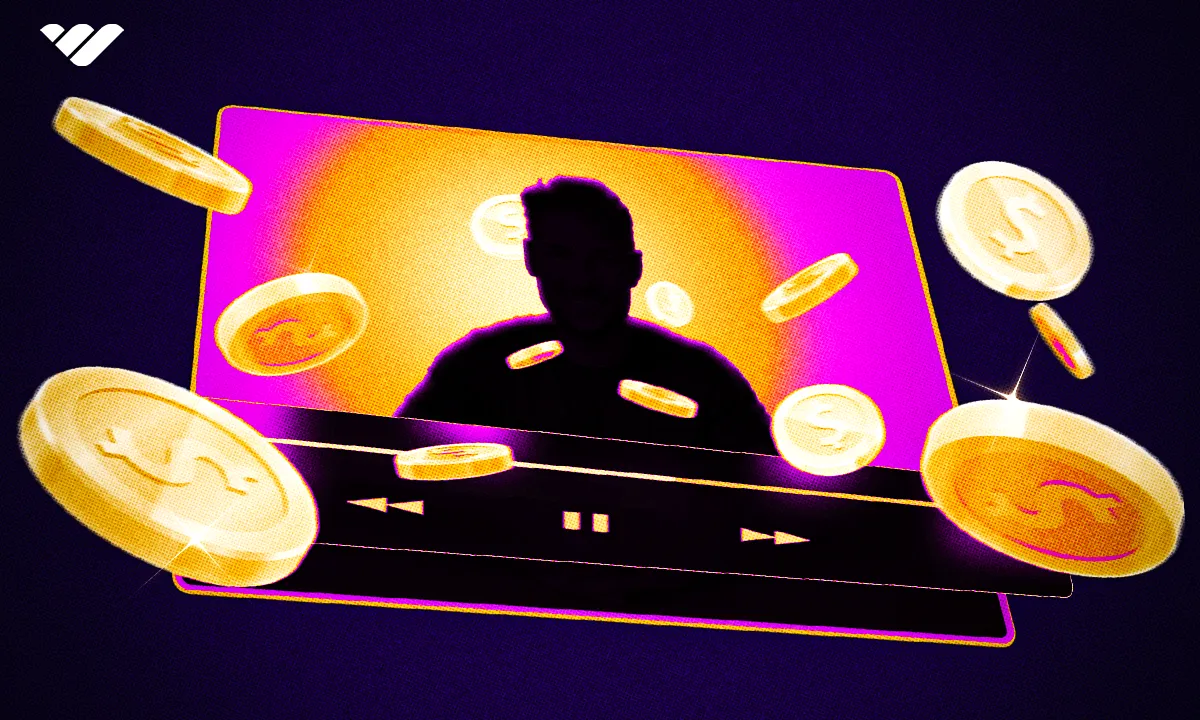Have video content? Want to make money with it? There are many different ways to monetize your videos, but which is best? Read this guide for a full run down of how you can make money with video content.
Key takeaways
- 207 million people worldwide work professionally as content creators, with nearly half doing it full-time.
- Pay-per-view models work best for high-demand, exclusive content like live events and premium tutorials.
- YouTube requires 1,000 subscribers and 4,000 watch hours for monetization through their Partner Program.
- The influencer marketing industry is expected to reach $24 billion by the end of 2024.
- Hybrid monetization models combining multiple strategies help creators capture revenue from various viewer segments.
It’s never been easier to monetize your video content online than it is now. According to the latest data, 207 million people worldwide are content creators professionally – and almost half of those are creating content full-time. But let’s face it: making your video content is only half the battle - the other half lies in monetizing likes, views, and shares into a sustainable income.
The good news? There are multiple ways you can do this.
Depending on the type of video content you produce, the platforms you use to host your content, and the payment models available, there’s a good chance you can monetize your online video content in more ways than you know. And while most platforms offer partnership models for creators, you can also capitalize on your viewership with brand partnerships, affiliate marketing, ad placement, and more.
So, let’s get into it. We’ll break everything down from the definition of video monetization to monetization models, popular platforms, and other ways to make money from your video content online.
What is video monetization?
Video monetization is the the practice of making money from your video content, typically by your users paying to access your videos.
Many creators are familiar with the following scenario - you’re filming the perfect videos. The views are high, and comments show that the content resonates with your audience. Yet you’re wondering what the difference is between you and others you see who have made their content their full-time job. The answer to that lies in video monetization.
So, what is video monetization? Simply, it means to generate revenue from your online video content. Monetization options have grown massively with the growth of video content, particularly on platforms like YouTube and TikTok. Where creators used to rely on advertising, platforms now offer various programs to help you transform passion into profit.
Beyond that, you can monetize your videos in other ways, from partnering with brands to offering exclusive content. Think of your videos as digital products. Like physical products, you can sell, rent, or even sponsor them.
Don’t worry if it sounds overwhelming; we’ll provide the details below. The key is understanding your primary audience and aligning your monetization strategy accordingly. Let's start by looking at some popular monetization strategies.
Popular monetization models
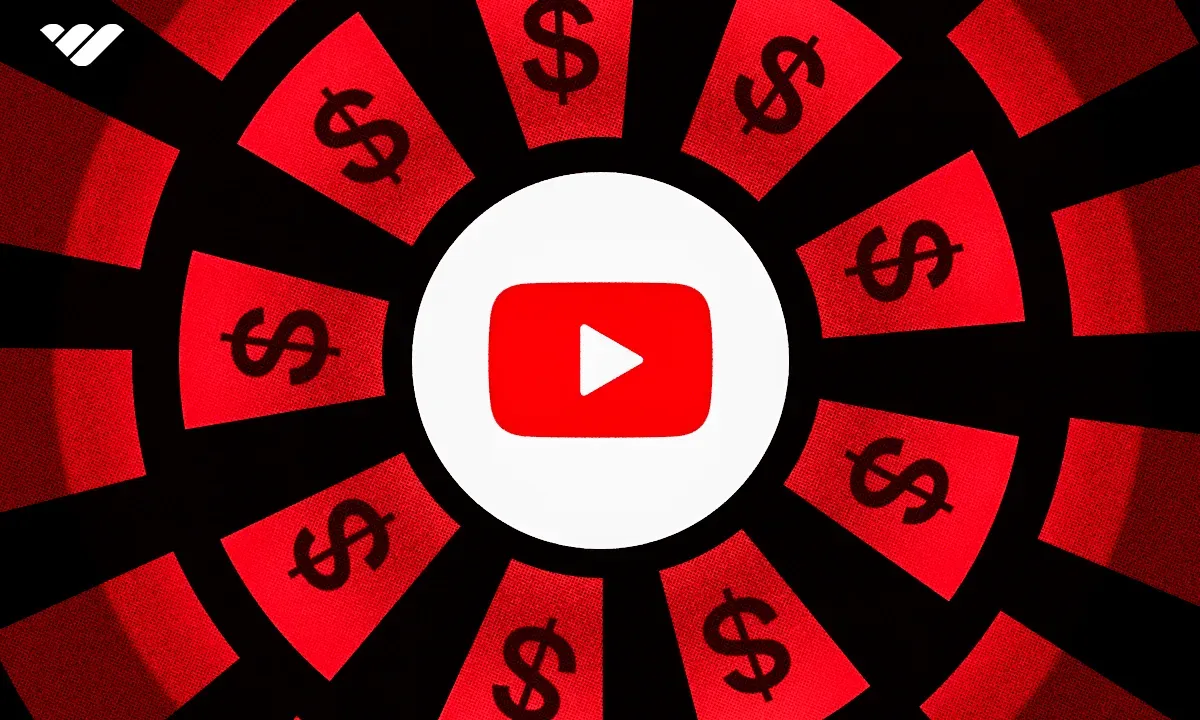
Growing your content creation from a hobby into a profitable income relies on effective monetization strategies. Thankfully, you have multiple options available. When it comes to video monetization, these are the models most creators are using:
Pay-per-view (PPV) or Transactional Video-on-demand (TVOD)
PPV or pay-per-view models offer creators a direct revenue stream. Viewers pay a one-time fee to access specific content, such as each video upload — this model best suits high-demand, exclusive content such as live events, premium tutorials, or documentaries. Think individual content creators who sell behind-the-scenes videos to their fans.
While PPV can be highly lucrative, it does rely on consistent demand and effective promotion, so keep this in mind.
Subscription-Based Video On Demand (SVOD)
A subscription model involves viewers paying a recurring fee for continuous access to a content library, such as Netflix or Spotify. Subscription models provide stable income and foster viewer loyalty.
However, to thrive with SVOD, content creators must curate a compelling and consistently updated library that keeps subscribers engaged. Viewers will not pay each month to access the same video library.
Advertising-Based Video On Demand (AVOD)
AVOD is a hugely popular model for creators who want to keep their content free and accessible. Ads are displayed within or alongside video content to drive revenue. This model’s success stems from the fact that you can reach a vast audience with no paywalls. For example? Most YouTubers have ad placement in their content.
One thing about AVOD? While it is a common way to make money, it can cause viewer irritation. Successful strategies often involve targeted advertising and viewer data analysis to optimize ad performance. Companies may request this data before deciding to work with you.
Hybrid Models
Choosing a hybrid model offers a flexible approach. By combining elements of multiple monetization strategies, this approach allows for audience segmentation and the opportunity to capture revenue from various viewer segments.
For example, you might offer free content supported by ads, a subscription for ad-free content, and the occasional PPV option. Popular creators often experience a higher demand for exclusive, paid content. For example, Netflix offers three plans- 'Standard with Ads' as the AVOD model, 'Standard' as the regular SVOD model, and 'Premium', which is also SVOD but offers more features and an increased number of devices permitted.
As we can see, a hybrid model allows you to offer premium content for those able to afford it while keeping your initial fanbase happy with regular, free (or low-cost) videos.
By understanding the nuances and potential of each model, you can develop a monetization strategy that aligns with your audience, content, and income goals.
Other ways to monetize video content
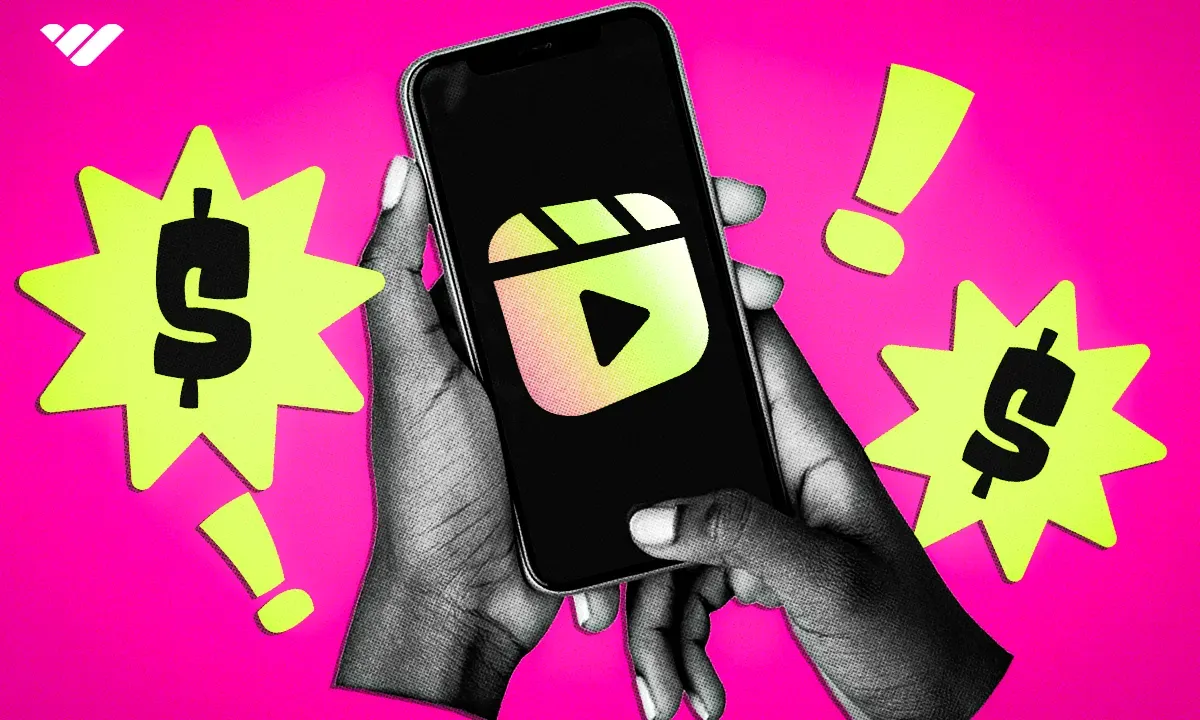
While we’ve covered the most popular methods of monetizing video content above, other options can boost your revenue:
Video Sales Funnels
Your video content is the perfect sales funnel for a product or service. Think workbooks, courses, coaching, and more. Selling products or services through video content helps to capitalize on your influence (if you have a dedicated and engaged audience).
While using your video content as a direct sales funnel allows you to keep direct control over your product or service, it will require understanding your audience's needs and incorporating effective marketing strategies.
Sponsorships and Brand Partnerships
Brand deals are becoming more popular among online creators, with the influencer marketing industry expected to hit $24bn by the end of 2024.
Collaborating with brands you align with is a win-win. By integrating sponsored content or product placements into your videos, you can generate revenue while introducing your audience to relevant products or services.
For brand partnerships to assist your monetization strategy (rather than harm it), choose brands you genuinely love and support to partner with. Remember to do your research before accepting any offers. Maintaining authenticity is crucial.
Affiliate Marketing
You don’t need a huge audience to start affiliate marketing. Being an affiliate differs from having brand sponsorships - instead of being paid for a one-off deal, you partner with brands to promote their products or services in exchange for a commission per sale. This can be a low-risk way to generate additional income and has no up-front investment.
Like ads, though, constantly sharing affiliate links can irritate your audience and make you look pushy. You can avoid this by choosing products that align with your audience’s interests.
Crowdfunding
Crowdfunding can be a powerful tool for creators to fund projects while building a dedicated community. Platforms like Patreon and Indiegogo first introduced crowdfunding, and remain popular choices for creators.
However, there are now more platforms to choose from - like Whop. With it's checkout link and the Tipping App inside of whops, Whop helps creators get donations from their fans.
Whether you want to develop a revolutionary app or build an off-grid community, you could raise the funds by leveraging your audience. If your content is engaging enough, viewers will often support your dream. Crowdfunding relies on direct fan support. While it has the potential for significant funding, it also requires a compelling pitch and effective campaign management.
Remember, the most effective monetization strategy often combines multiple approaches. Don’t be afraid to experiment with different models, and keep analyzing your audience to find the perfect formula.
What type of video content can I monetize?
With so many online communities of niche interests, most video content can be monetized in one way or another. Different monetization strategies may work better than others, depending on whether you create long or short-form content.
Long-form video content
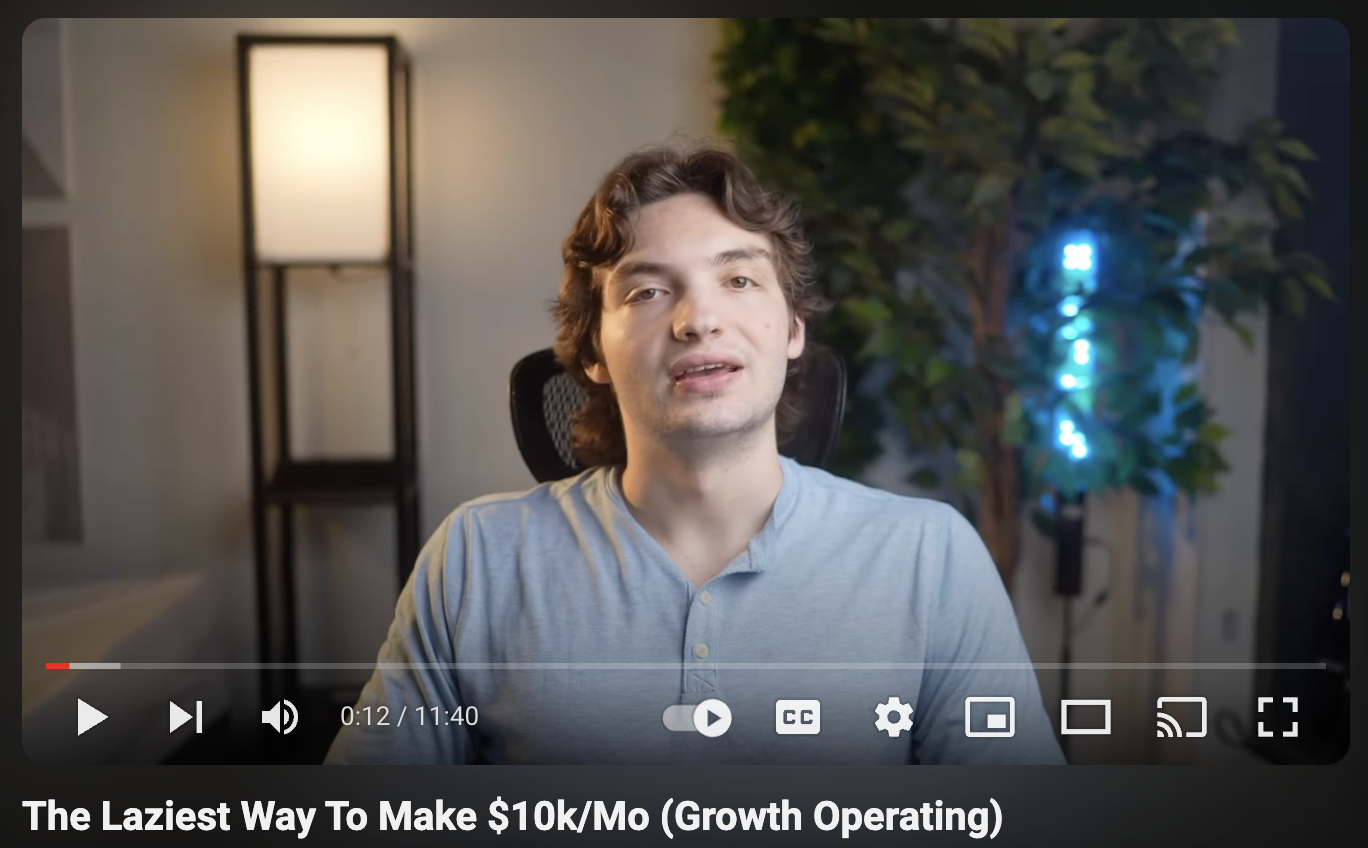
When we say long-form video content, we mean video content with a running time of over 10 minutes. Think podcasts, tutorials, reaction videos, get-ready-with-me videos, vlogs, courses, and more. Most long-form video content will be hosted on platforms geared toward viewers with longer attention spans, such as YouTube, Vimeo, or even here on Whop.
Long-form content often attracts recurring advertisements and ongoing brand partnerships. The downside is that it is usually apparent advertising.
Short-form video content
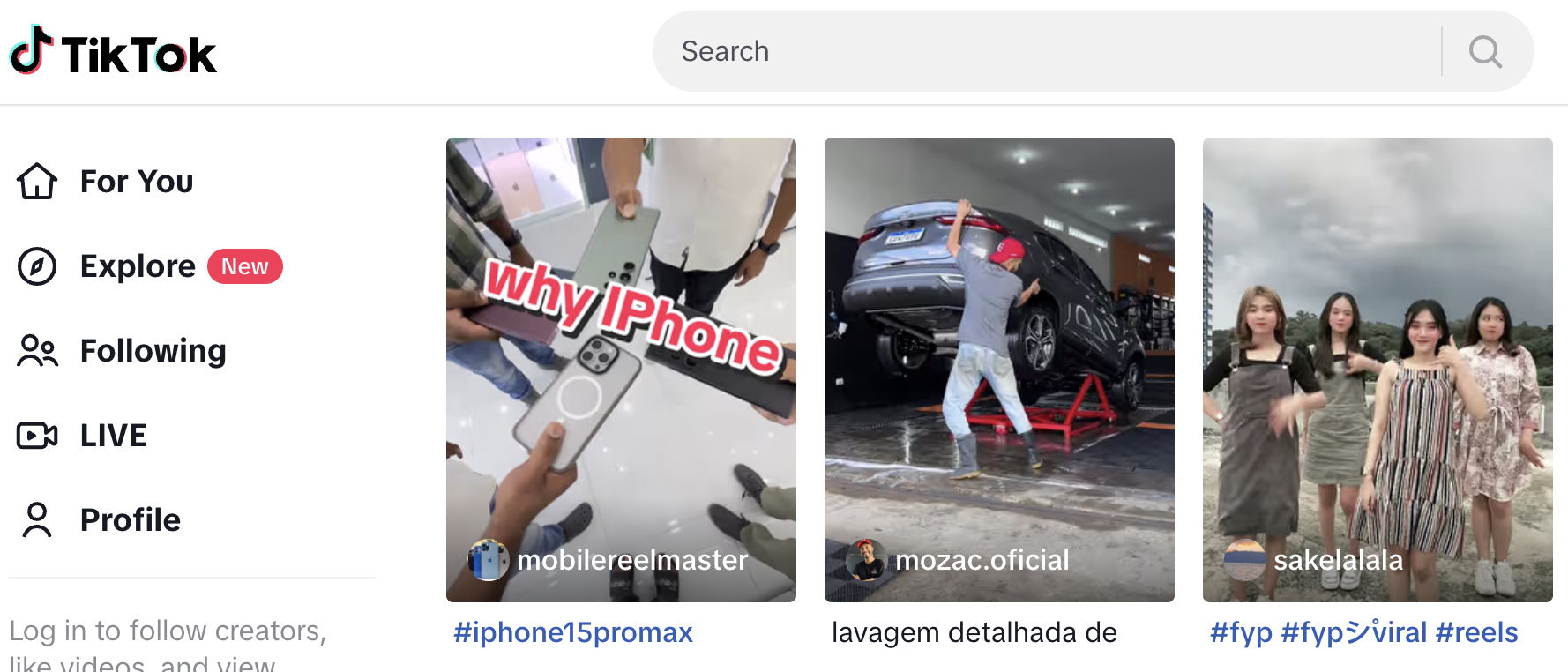
Short-form content can be just as easily monetized, depending on your niche and audience. When we say short-form video content, we mean video content under 10 minutes – sometimes as short as 30 seconds. Think TikToks, Instagram reels, YouTube Shorts, and Snapchat stories.
Creators with engaged audiences on these platforms usually post daily or behind-the-scenes content, providing brands with the perfect opportunity to request subtle ads and sponsored product placement.
Chances are, whatever video content you’re creating can be monetized. It’s worth looking at other creators in your niche and analyzing which monetization strategies seem to work for them. This also gives you an idea of which brands and companies you could pitch to work with.
Where can you monetize videos?
While YouTube used to be the sole choice for creators ready to earn money from their video content, the options these days are pretty endless.
Most creators will likely host their content on multiple platforms, and for good reason. For one, you have a better chance of reaching a larger fanbase (not everyone is active on every platform). Secondly, you have multiple monetization options.
When choosing which platform(s) to host your content, you want to consider a few factors. What sort of reach does the platform have? Does it have built-in compensation plans for creators? Which advertisers does it allow? Is it banned in any country? Where is your audience most active? These questions help guide you in choosing the right platforms to use.
Video monetization platforms
With all that in mind, let’s run through a few of the most popular hosting platforms and their benefits.
YouTube

As one of the biggest video hosting platforms, YouTube offers their own YouTube Partner Program.
The YouTube Partner Program was initiated to allow creators to monetize their content through various revenue streams, such as ads, channel memberships, Super Chat, and more. Creators integrate with YouTube’s advertising network, which can be an effective way to find sponsors and partnerships.
However, you need an audience to show ads on your channel. Channels must have at least 1,000 subscribers and 4,000 hours of watch time from viewers in the past 12 months. In other words, your audience and watch time has to grow consistently. Hitting the numbers once isn’t enough.
While there is no minimum running length to monetize a YouTube video, your video should be 8-10 minutes long for your best chances of earning revenue. The longer the video, the more ads you can cleverly place without annoying viewers – for example, with longer videos, you can put extra mid-roll ads.
Another vital thing to consider with YouTube is that they won't show ads on violent, hateful, or misleading content. So keep it clean, original, and respectful. And make sure your content is original. While creative use of other people’s content is okay (snippets for reaction’s sake, for example), upright plagiarism won’t fly. Break these rules, and your account could be demonetized.
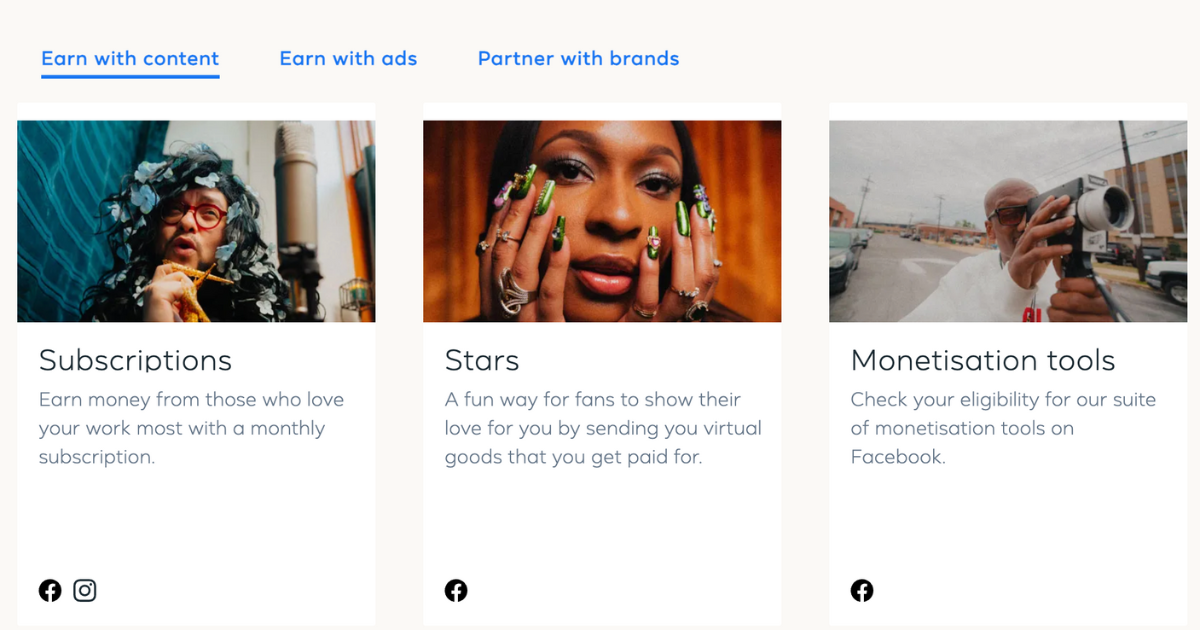
Many people don’t think of Facebook as the place to monetize their videos, but it can be pretty effective if you have a strong, community-based audience.
While Facebook offers some built-in monetization options like ads and subscriptions, there’s also real money to be made through leveraging your Facebook community. Think of your page as a marketing channel.
You can use your page for affiliate marketing purposes or to sell your products and services using a third-party platform like Whop. You can also create a paid community on an external platform and use Facebook to direct your fanbase there. This approach is less restrictive, letting you start small. It also offers more earning potential than Facebook's native methods.
But if you are interested in using Facebook’s built-in monetization methods, here are a few key things to be aware of.
To be eligible for in-stream ads, your account must be a professional Page, not a personal profile. Secondly, you'll need to cultivate a pretty large audience of at least 10,000 followers. Facebook requires this to demonstrate your reach and potential impact for advertisers. Like YouTube, engagement is also a key factor here. Your video content needs at least 600,000 minutes of total video views within the last two months. You'll also need at least five active videos on your Page. Why? It shows Facebook you’re committed to creating fresh content.
Finally, there are some baseline eligibility requirements. You must be 18 or older to participate in any Facebook monetization programs. Additionally, your location matters – in-stream advertising is only available in countries where Facebook has authorized it.
TikTok
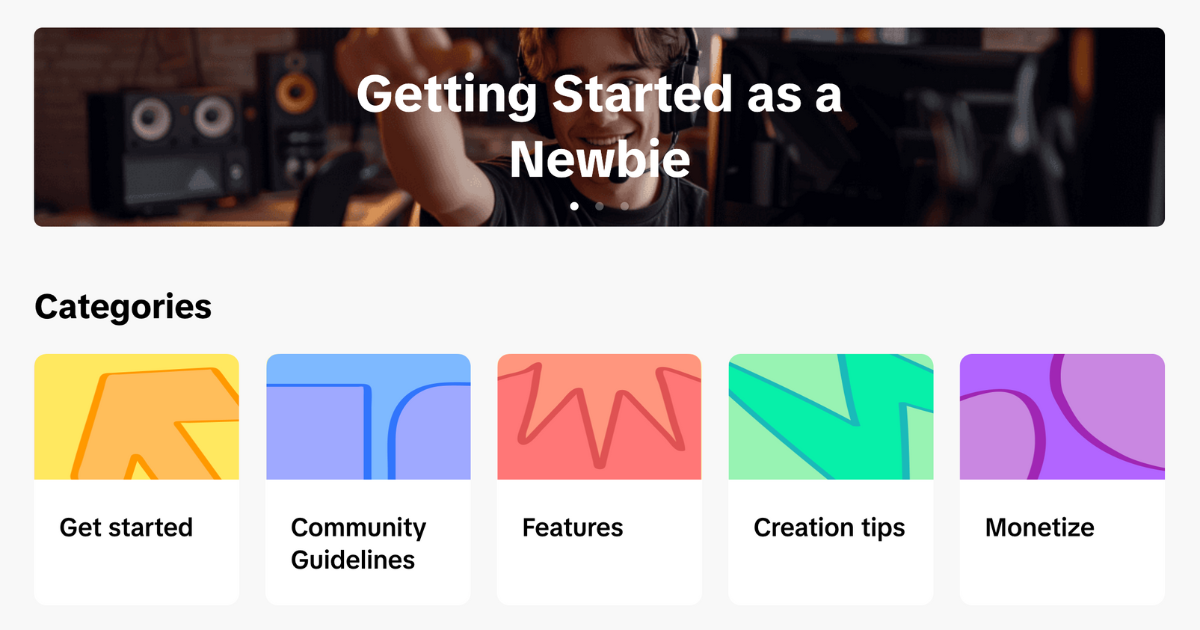
It’s no secret that creators can make a pretty penny on TikTok. Ad revenue is exploding, reaching an estimated $23.6 billion in 2024. And it’s no surprise as TikTok is starting to outperform other social media giants and popular search engines.
With TikTok, you have multiple options for monetizing your content. The most popular is through TikTok’s built-in monetization programs, which differ by region. In the US, UK, Germany, and France, creators can join the Creativity Program, which rewards creators for videos over a minute based on views and engagement.
Like YouTube, TikTok has some requirements for followers and views, which can feel intimidating. You'll need at least 10,000 followers and 100,000 views in the last 30 days.
If you’re in Italy or Spain, you can access the Creator Fund, where earnings depend on content performance. Specific requirements might vary, so check TikTok's official resources for details.
In addition to TikTok’s creator programs, the platform is huge for affiliate marketing, brand deals, and selling merch and products.
Many TikTok creators use their profiles and content to draw fans to the link in their bio. They’ll often host paid communities, courses, and subscription-based extras for fans on other platforms like Whop. This is a great way to cut out the middleman and provide extra content for fans willing to pay a premium.
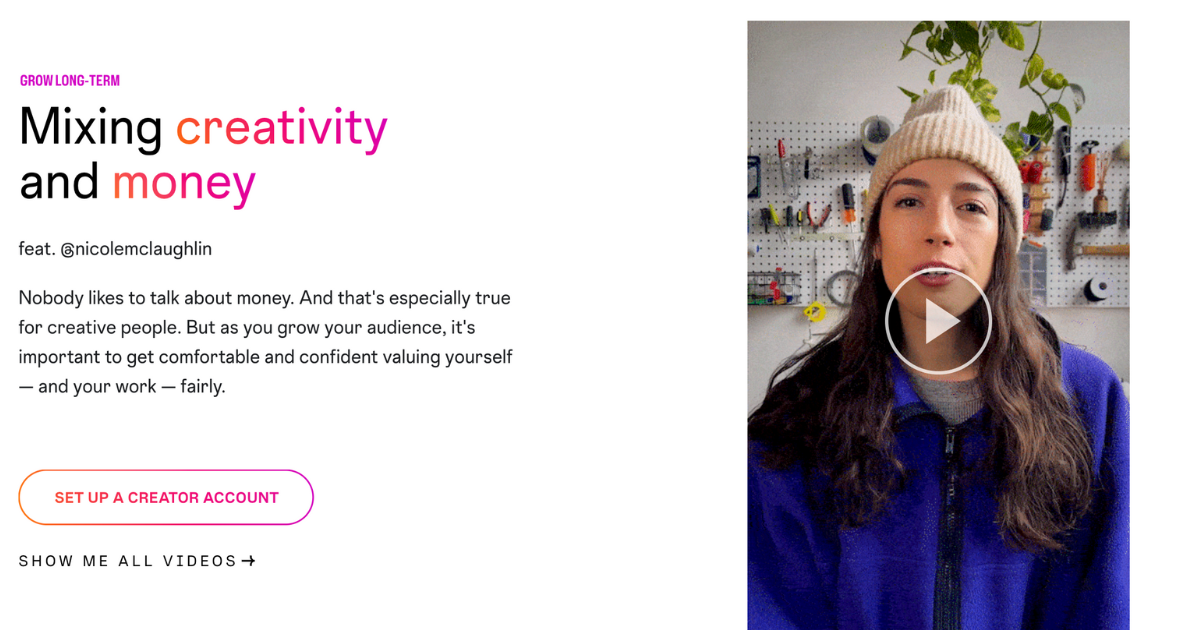
Instagram Reels are Meta’s attempt to break the hold TikTok has on short-form video content. Here’s why you might want to consider posting on Reels, even if you’re already big on TikTok.
Firstly, it opens up your audience. While TikTok is the more popular platform for younger demographics, Instagram boasts a higher percentage of daily users in the 25 to 34-year-old demographic. Besides that, though? Both platforms allow sharing of short-form video content, which can easily be repurposed from one platform to another. In other words, are you already making TikTok content? It’s a no-brainer to post on Reels.
Instagram offers multiple ways to monetize your Reels content through the built-in creator marketplace, including integrated options like subscriptions, gifts, and branded content. But there are options, too. Instagram also allows creators to sponsor ads, partake in affiliate marketing, and promote paid communities – for example, one you might build on Whop, as some of our biggest creators do.
To monetize on Instagram, you’ll need to know a few requirements. Firstly, Instagram monetization is only available to users who are over 18. While each monetization method on the platform can have varying requirements, there are two that will always be required:
- Residing in an eligible country
- Having a professional account
Some monetization options are widely available, while others are restricted to a handful of regions. Remember, global reach isn't guaranteed with all monetization methods. Be aware of geographic limitations!
Twitch

While YouTube excels at hosting long-form content and Reels/TikTok at short-form content, we have yet to cover another type of popular video content: streaming.
Live streams have become super popular in recent years, particularly through COVID. Streaming offers content creators a way of connecting with their audience more intimately, raw and unedited. While you can save on video production, live streaming still demands much time from creators, and you want to be compensated fairly.
Though you can stream on YouTube, Twitch is a platform dedicated to streaming only. Think gaming, art creation, talks, reactions, and more. Twitch creators thrive on interaction; subscriptions, donations, and brand deals are how creators make money from their audiences. Let’s break it down.
The Twitch Creator Camp is accessible to everyone and provides detailed breakdowns of each monetization strategy on the platform. To keep things quick, we’ll give you a general overview.
Bits and subscriptions are two of the most common ways communities support streamers on Twitch, but you can also run ads and third-party sponsorships.
On Twitch, your community can support you through subscriptions and get rewarded with exclusive perks. Bits are essentially like ‘cheers’ during your stream. You receive $0.01 for each Bit a viewer sends you throughout your livestream.
Beyond these monetization methods, you can also run ads, and Twitch has some handy guidelines for maximizing potential earnings.
You’ll need to become a Twitch Affiliate to access these monetization strategies. The requirements are as follows: you must reach 50 followers, stream for 8 hours, stream on 7 different days, and reach an average of 3 viewers.
Monetizing videos with Whop
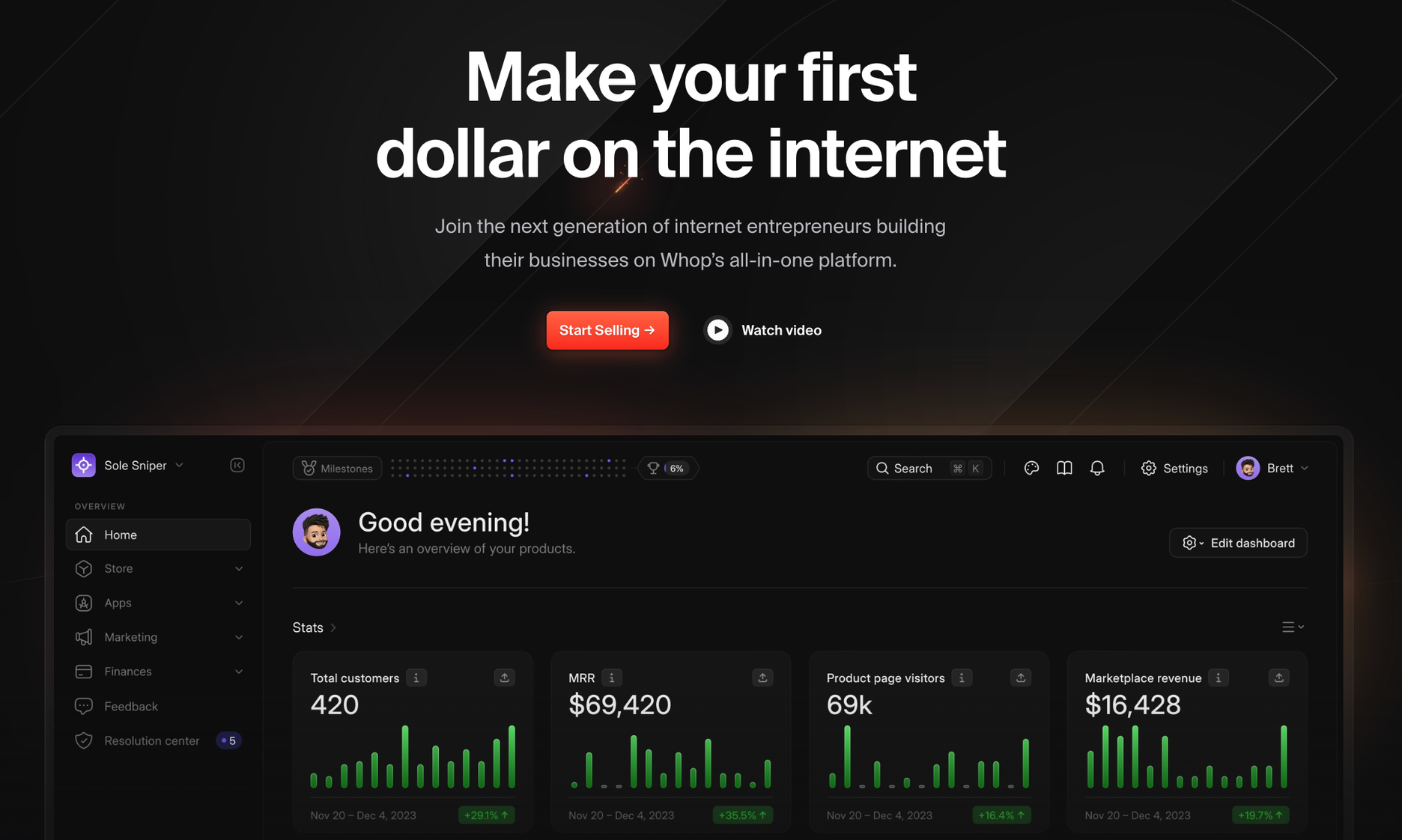
While all these platforms offer varying compensation plans and third-party options for advertising, sponsorships, and affiliate marketing, some creators feel frustrated with their limitations. Between platform rules, narrow reach, and hefty cuts, it can feel like you're creating on someone else's terms.
So what if you could take control? With Whop, you can wave goodbye to annoying restrictions and build a thriving business around your video content.
Whop empowers you to create your own space on the internet with your own whop. Your whop is your internet hub, where you can create the perfect space for your business and your fans.
You can design your whop any way you like - for example, you may want to add a chat where your video viewers can communicate, a forum for questions and answers, create an affiliate link board, and share written content, video content, and more. You can even host giveaways and accept donations - all within your very own whop.
Your whop can be free, paywalled, or a mixture of both. While your other social platforms act as your primary marketing channel, you then redirect your viewers to your whop, where they can pay to access your offerings directly on the platform.
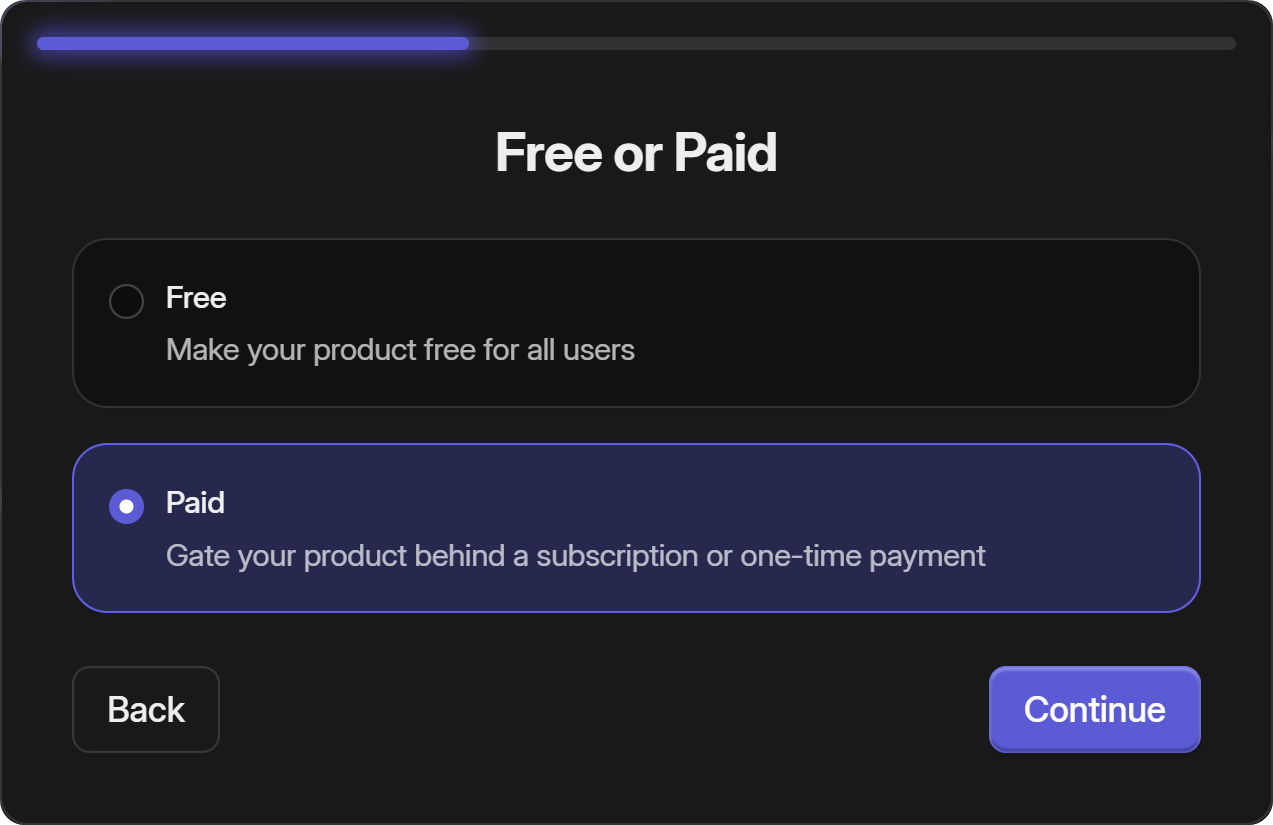
If you want to make even more cash, consider selling valuable extras like ebooks or online courses. As your whop is customizable you don't have to think about that now - simply add in these options later down the line. Whop is designed to grow with your business.
The best part? You control everything, from pricing to membership structures and even offering different access tiers within your community. You can easily offer a free tier with basic access and a paid tier with exclusive content. Charge a one-time fee, create a subscription model, or even paywall-specific videos or blog posts.
Plus, Whop keeps things simple with a transparent 2.7% + $0.30 fee so that you can keep 97% of your income. No platform membership fees, and no restrictions on how many viewers, followers, or members you must have. Anyone can monetize with Whop.
Make money with your videos today
Ditch the hassle and start earning with Whop. Creating your whop, setting it up, and activating payments takes only minutes.


